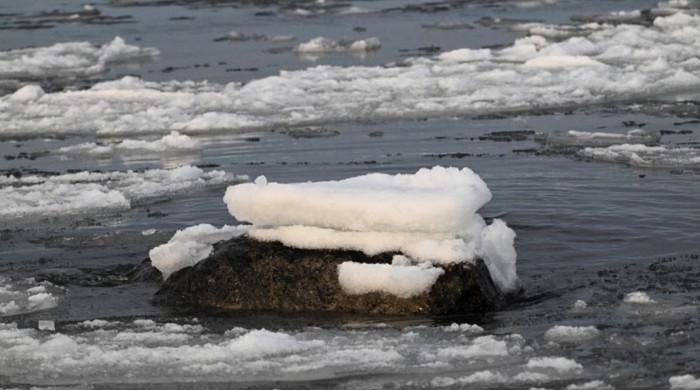Geneva: The United Nations warned Wednesday that there is 70% chance that the average heating from 2025 to 2029 exceeds the international point of reference of 1.5 degrees Celsius.
Therefore, the planet is expected to remain at historical heating levels after the hottest two years registered in 2023 and 2024, according to an annual climate report published by the World Meteorological Organization, the UN meteorological and climatic agency.
“We have just experienced the most registered 10 years,” said the UMM General, Ko Barrett.
“Unfortunately, this WMO report does not provide any respite sign in the coming years, and this means that there will be a growing negative impact on our economies, our daily lives, our ecosystems and our planet.”
The 2015 Paris Climate Agreements aimed to limit global warming to far from 2 ° C above preindustrial levels, already 1.5 ° C if possible.
The objectives are calculated in relation to the average of 1850-1900, before humanity began the humanity of coal, oil and gas, which emits carbon dioxide (CO2), greenhouse gases in large part responsible for climate change.
The most optimistic objective of 1.5 ° C is one that the growing number of climatic scientists now considers impossible to achieve, since CO2 emissions are still increasing.
Five -year perspective
The latest OMM projections are compiled by the National Meteorological Service of the Meteorological Office of Great Britain, based on forecasts from multiple world centers.
The agency predicts that the average global temperature close to the surface for each year between 2025 and 2029 will be between 1.2 ° C and 1.9 ° C above the pre -industrial average.
He says that there is a 70% probability that the average warming in the 2025-2029 period exceeded 1.5 ° C.
“This is completely consistent with our proximity to a long -term 1.5 ° C at the end of the 2020s or the early 2030s,” said Peter Thorne, director of the group of units of analysis and research of Ireland climate of the University of Maynooth.
“I would expect in two or three years this probability of being 100%” in the perspectives of five years, he added.
OMM says there is a probability of 80% that at least one year between 2025 and 2029 are warmer than the warmest registered year (2024).
Long -term perspective
To soften natural climatic variations, several methods evaluate long -term heating, said OMM Climate Services director Christopher Hewitt, a press conference.
An approach combines observations of the last 10 years with projections for the next decade.
This predicts that the average heating of 20 years for 2015-2034 will be 1.44 ° C.
There is still no consensus about the best way to evaluate long -term warming.
The EU Copernicus climate monitor recognizes that the warming is currently 1.39 ° C, and 1.5 ° C projects can be achieved in mid -2029 or before.
2 ° C heating now on radar
Although “exceptionally unlikely” to 1%, there is now a probability above zero of at least one year in the next five higher than 2 ° C heating.
“It is the first time that we have seen such an event in our computer predictions,” said Adam Scaife of the Meteorological Office.
“It is shocking” and “that probability will increase.”
He recalled that a decade ago, the forecasts showed for the first time the very low probability of a calendar year that exceeds the reference point of 1.5 ° C. but that happened in 2024.
‘Dangerous’ heating level
Each fraction of an additional degree of heating can intensify heat waves, extreme precipitation, droughts and melting of ice caps, sea ice and glaciers.
This year’s weather does not offer a break.
Last week, China recorded temperatures above 40 ° C (104 degrees Fahrenheit) in some areas, the United Arab Emirates of almost 52 ° C (126f), and Pakistan was beaten by mortal winds after an intense heat wave.
“We have already reached a dangerous level of heating,” with recent mortal floods “in Australia, France, Algeria, India, China and Ghana, forest fires in Canada,” said climatologist Friederike Otto of Imperial College London.
“Trusting oil, gas and coal in 2025 is total madness.”
Other warnings
It is predicted that Arctic warming will continue to exceed the global average in the next five years, said the WMO.
Sea ice predictions for March 2025-2029 suggest more reductions in the Barents Sea, the Bering Sea and the Okhotsk Sea.
The forecasts suggest that Asia del Sur will be wetter than the average in the next five years.
And the precipitation patterns suggest more humid conditions than the average in the Sahel, northern Europe, Alaska and northern Siberia, and drier than the average conditions on the Amazon.




